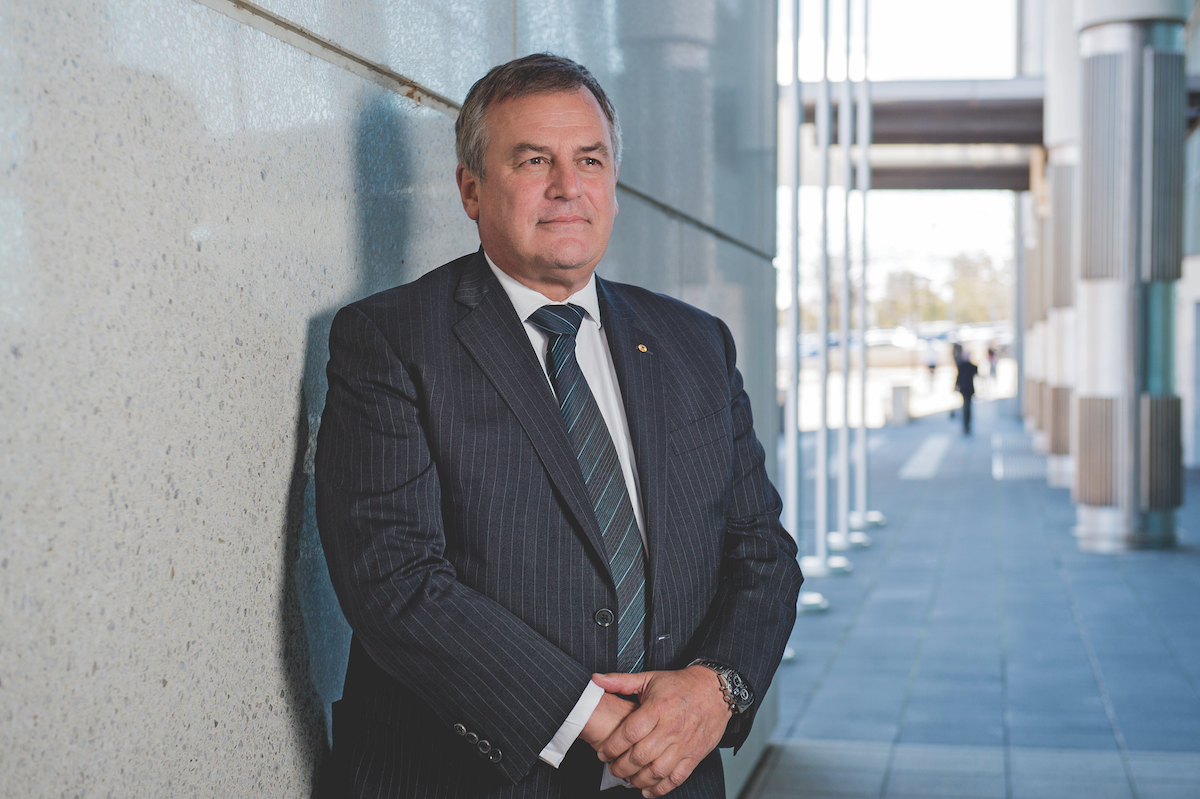Defence Science and Technology (DST) is dedicated to using science and technology to protect Australia’s national interests. It has roots stretching back to 1907, when Cecil Napier Hake was named Chemical Advisor to the Commonwealth Department of Defence. Hake, the first in a long line of Defence scientists in Australia, carried out his research in Melbourne, at the Victorian Government’s Explosives Department Laboratory.
More than a century later, the organisation has extended its reach out of Melbourne, across Australia and beyond, through collaboration with international partners. Alex Zelinsky is Australia’s Chief Defence Scientist (CDS) and leads DST. He has a broad background as a computer scientist, a systems engineer, a roboticist, an academic, and an entrepreneur.
Consequently, in possession of a nicely rounded perspective, as well as a keen understanding of what drives success across many industries, Alex recognises that there is nothing more important than communication when it comes to leadership, to transforming organisations, and to making Australians aware of the role science and technology can play in Australia’s defence interests.
Arriving in the CD role in March 2012, Alex will be leaving it in November, to take up the position of Vice-Chancellor at the University of Newcastle (UoN). Over the course of his tenure, he has overseen the transformation of DST, against a backdrop of budget cuts and a reorganisation of staff. “We reduced our workforce by nearly 20%,” Alex tells The CEO Magazine.
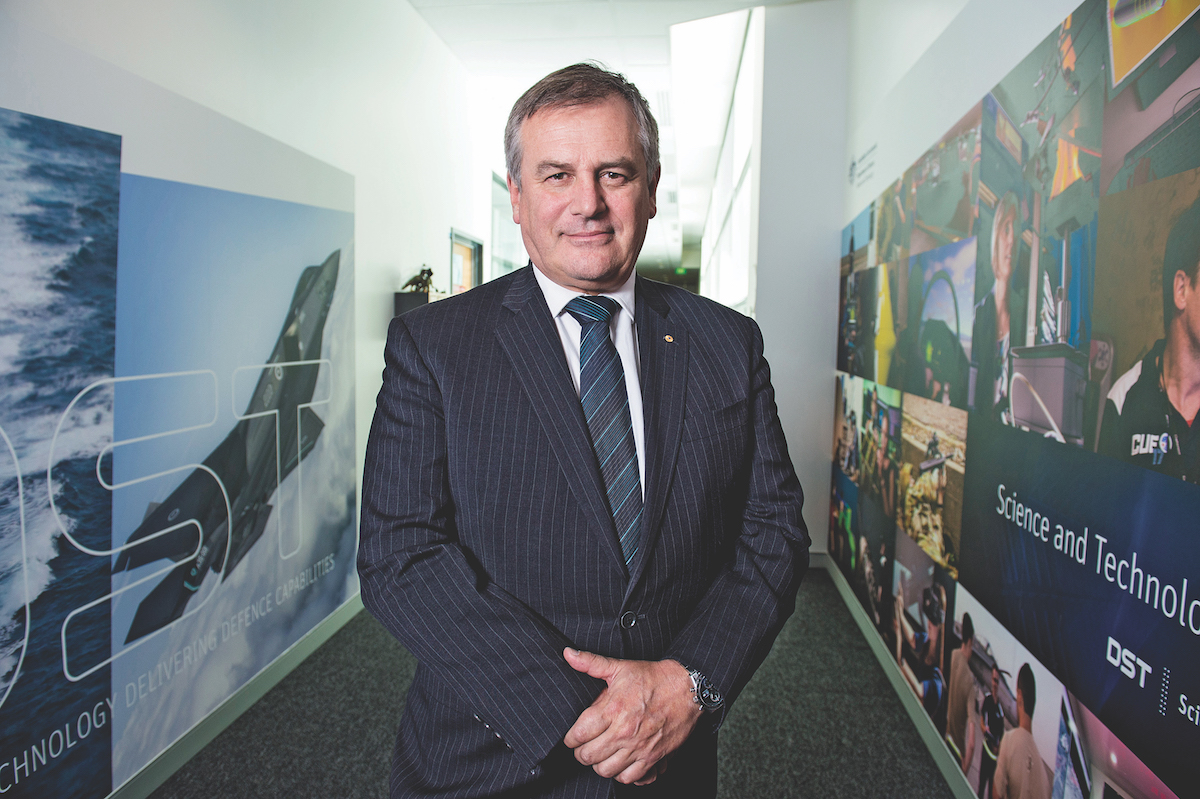
“We went through a significant reorganisation, ending up with fewer business units, and also removed layers of management, restructuring leadership teams with a client focus. The entire leadership in the first two levels of management has been completely re-engineered.”
With the dust from the restructure settled, a picture of a transformed DST has emerged. “We’ve become more valued as an organisation,” Alex says. “We create more value for the Department of Defence, we provide better advice, and we develop better technical solutions.
“We’ve also become more collaborative: we’re much more transparent about where our resources go, and we’re actively seeking partnerships with industry and academia both in Australia and abroad.
“Finally, we’ve become a much more innovative organisation. We have accelerated the ways in which we produce solutions for new technologies, and we’re also thinking about new ways to encourage our people to take risks in a larger and, at times, bureaucratic organisation.”
“We have accelerated the ways in which we produce solutions for new technologies, and we’re also thinking about new ways to encourage our people to take risks.”
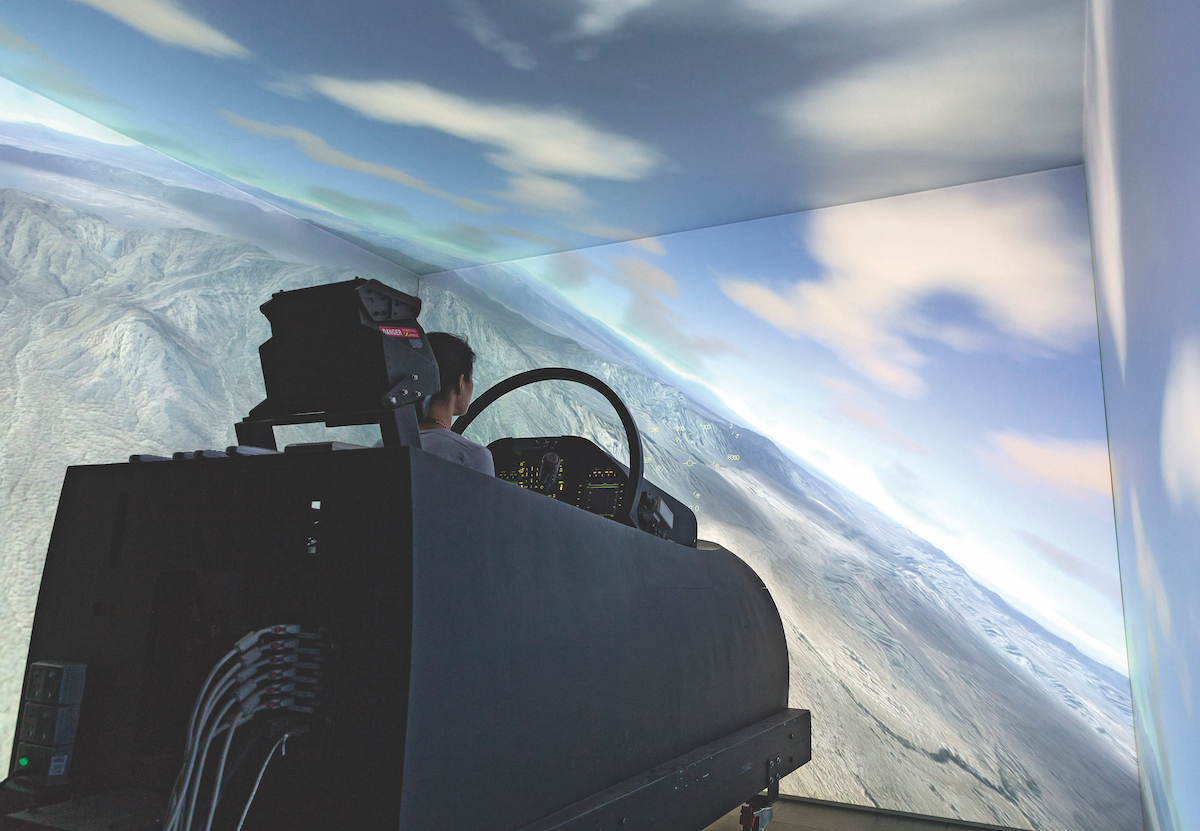
Collaboration and innovation
Collaboration and innovation are driving value creation. There is evidently a close relationship between these three themes of the changes that have taken place at DST. “A process like this takes time,” Alex acknowledges. “Moreover, we’ve done it in a way that people haven’t lost faith in us. We’re delivering better outcomes than we were in the past, and with much greater value.”
The establishment of partnerships between DST and industry and academia is one of the areas in which this value creation can be seen. “These days,” Alex notes, “it is impossible for any organisation to employ all the smartest people in the world, and much of the talent you need to work with is located outside your organisation. The challenge is to create the right culture, with the right infrastructure, to enable talent in other parts of Defence, other parts of Government, other parts of Australia, or even abroad, to come together and collaborate.”
There is a strong framework in place to support DST’s collaboration with academia. The initiative came to life in July 2014, as the Defence Science Partnerships program. “We initially worked with eight Australian universities to come up with a set of agreements that could apply to all Australian universities. We established 14 mechanisms for collaboration covering research projects, student scholarships, sharing infrastructure, staff mobility and intellectual property.”
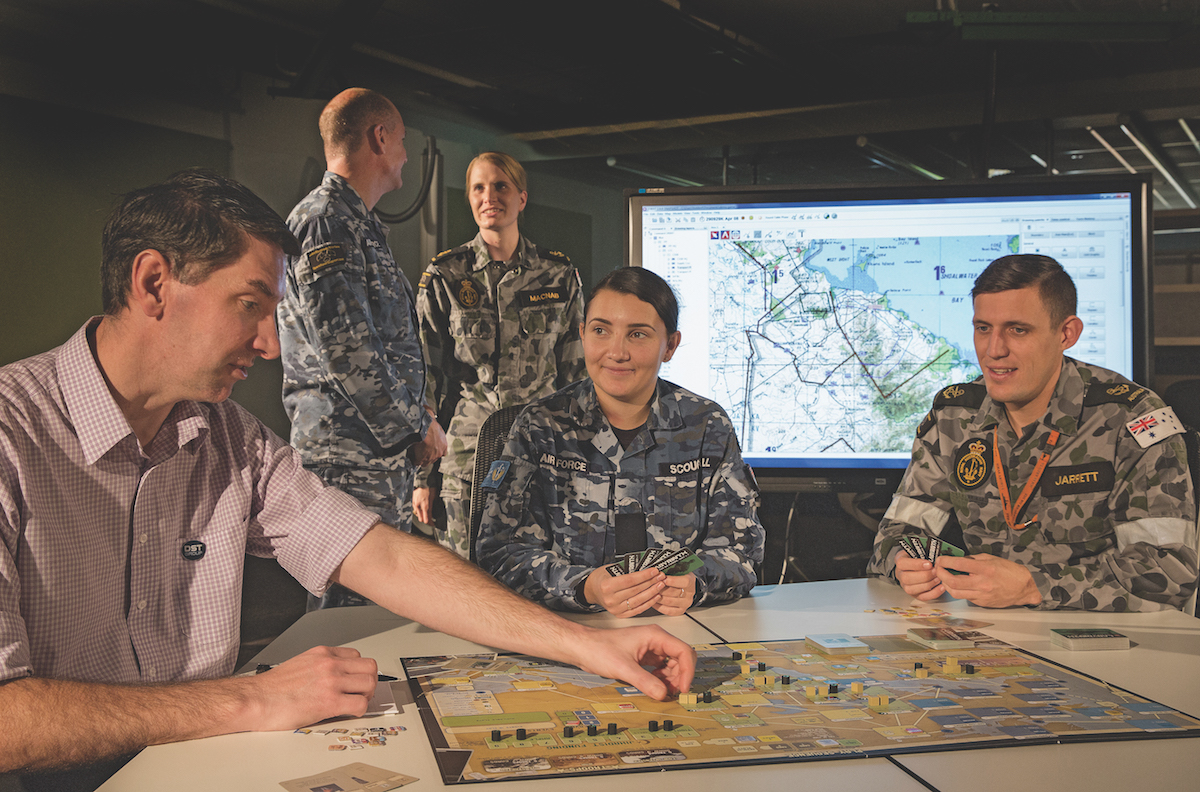
Today, more than 30 universities are involved, and centres have been established dedicated to food innovation, energetic materials and high-speed flight, to name a few. “Now, when we want to carry out a project, we look at which collaboration mechanism is best. This is all done in an efficient manner: what used to take months now takes days or weeks. We can move much more quickly into new topic areas and be agile.”
A similar process is occurring on the side of the industry, where DST has formed a series of strategic alliances with companies like Lockheed Martin, Boeing, Saab and BAE Systems, whose extensive R&D capabilities allow it to make a significant, strategic contribution to DST’s operations. DST also runs an industry placement scheme that offers its scientists and engineers experience in industry for a period of up to two years.
Considering what it takes to perform as an effective leader, Alex is adamant that “you need to have passion for your work, and be committed to making a difference for Australia”. “You need to harness that passion and commitment, and the way to do that is to be focused on impact, on getting scientists to focus on realising tangible outcomes from their results.”
He illustrates this impact by way of an example: if a scientist works on an acoustic material that will enable a ship or a submarine to evade detection, they also seek to work in partnership with a company that can aid in the construction of the material.
The next step is to have Defence acknowledge the utility of the product, and see that it is manufactured and put to good use, resulting, ultimately, in a better performance for the Royal Australian Navy (RAN). “That’s impact. You’ve gone all the way from an idea, being committed to and passionate about translating it into an output, and seeing that output adopted. The successful adoption of technology is what makes the difference.”
Another side to the idea of impact that Alex finds paramount is the ability of the technology to leave the laboratory and enter the real world. He cites the example of the radar absorbing material that DST developed to reduce the detectability of the Collins Class submarine from enemy radar systems.
[owl_carousel class=”hide-dots owl-small”]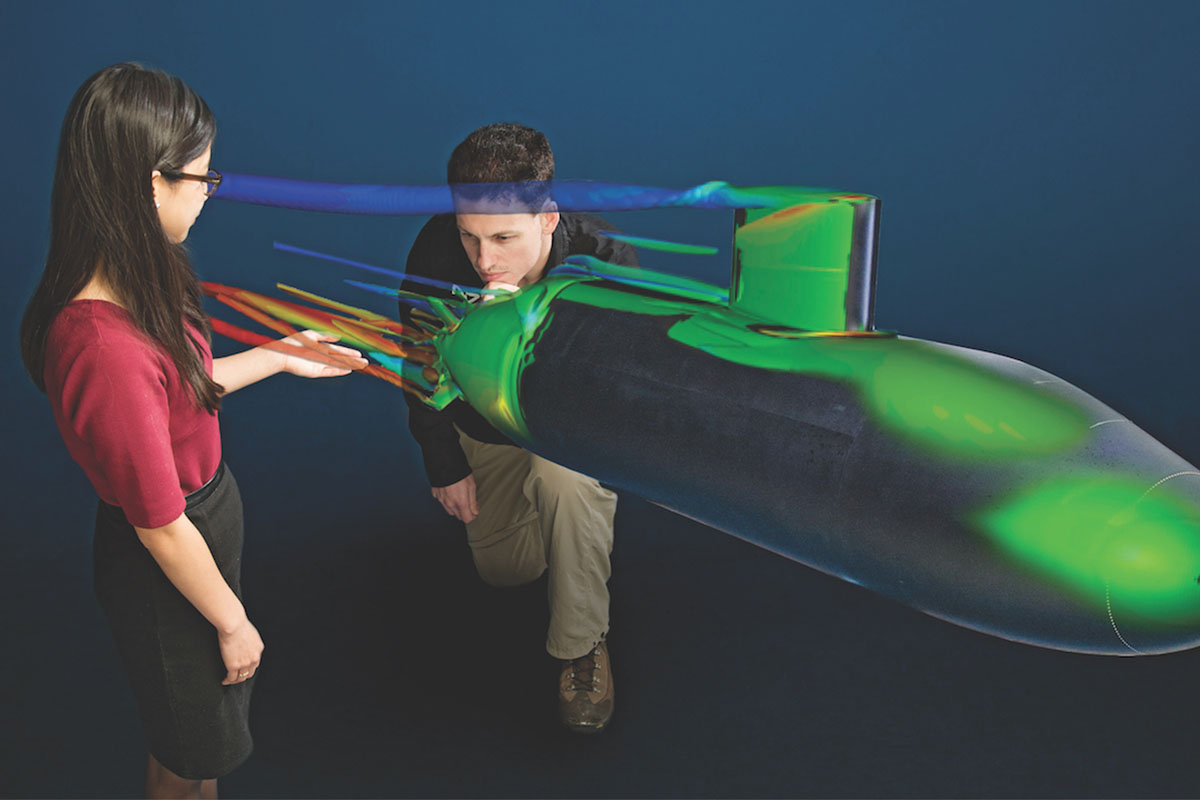
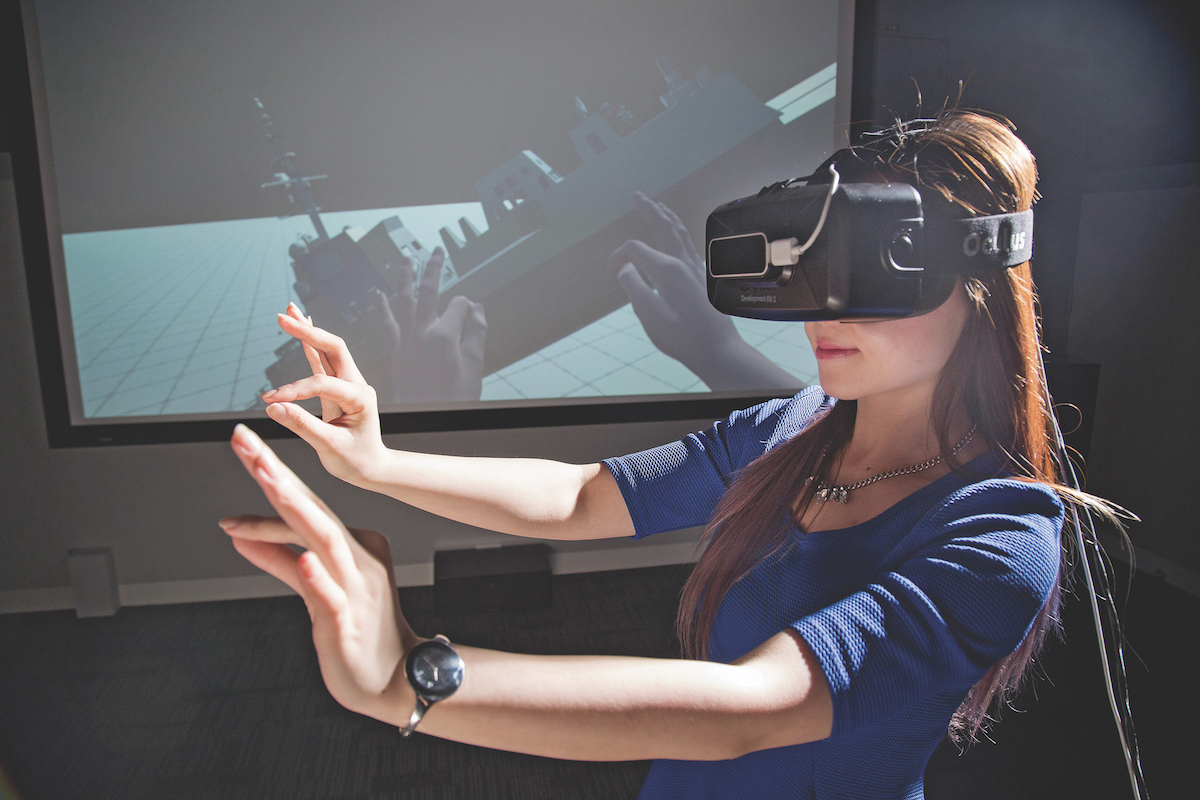
[/owl_carousel]
The original material, provided by an overseas supplier, was rusting, debonding from the periscope masts and not optimised for the radar frequency range of most interest to the Navy. DST designed a hard-wearing material which offered the maximum performance across radar frequency bands. The material was manufactured by a small Australian company Mackay Consolidated Industries and has since been fitted not only to the submarines but to Navy frigates.
Awards and notable acheivements
Last month, the company and DST received the Essington Lewis award for the development of the radar absorbing material as a successful sustainment project in the minor projects category. “This project has not only provided the Navy with a superior Australian-made product but also a significant benefit to Defence in stealth technology,” Alex says.
There is a concerted effort being made to cultivate an understanding of the importance of impact among the DST staff. Alex sees the role of the leadership team encompassing a drive to ensure that the organisation’s culture reflects its desire to continue to be more valued, more collaborative, and more innovative. “To be more valued, you’ve got to be working with others, and you’ve got to be thinking of new ways of doing things,” he says.
This also has something to do with the calibre of talent working within the organisation. Attracting the industry’s best talent to DST rests in large part on making sure its value is known, and constant communication is of vital importance here.
Alex knows that “we do need to keep talking about our organisation and the great things we do, and the difference we make. There are remarkable things that our scientists have done, from offering better protection for our soldiers against explosives in the Middle East to making our planes fly longer, faster and with greater endurance.”
“We do need to keep talking about our organisation and the great things we do, and the difference we make.”
These achievements need to be publicly celebrated while giving the broader population an awareness that DST encourages young people to consider a career in science.
DST offers individuals the chance to forge a long-term career not only doing something that they love, but also making an active contribution to Australia’s defence. With over 2100 scientists, engineers and professional support personnel, Alex describes the workforce as one that is “incredibly dedicated”.
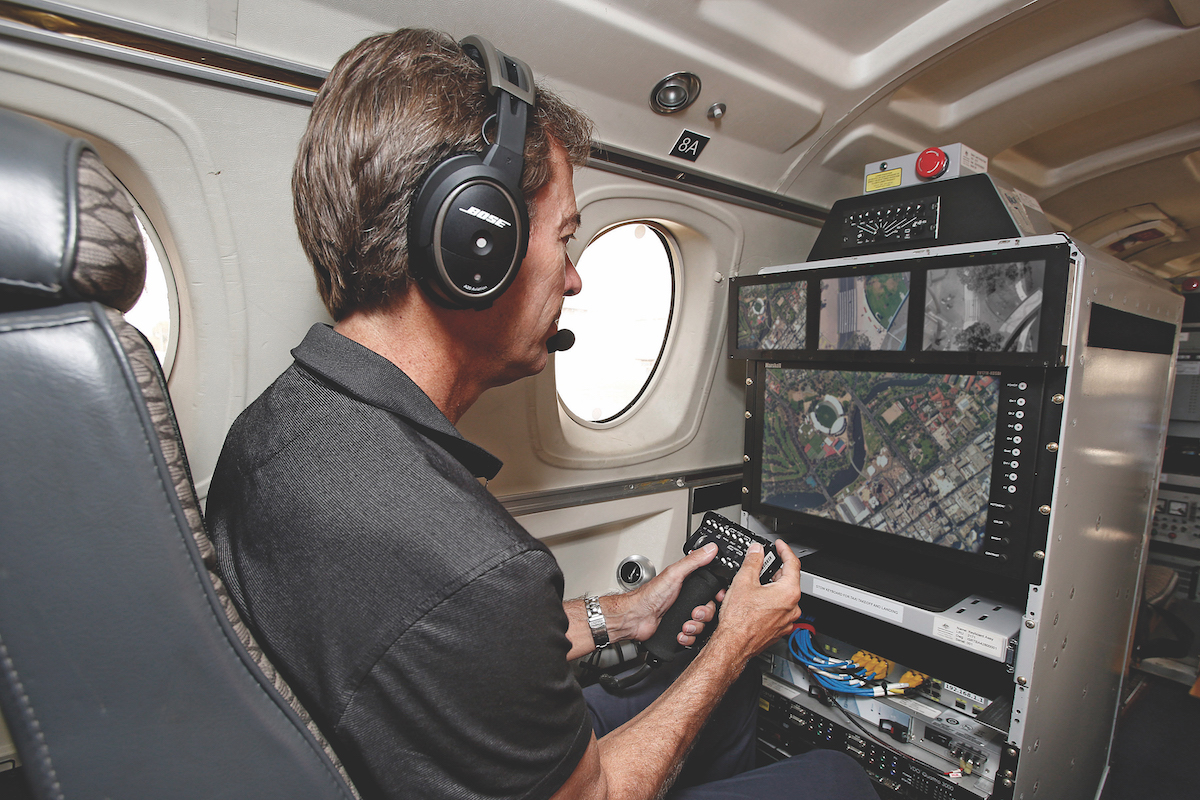
“While I’ve been here, I’ve regularly handed out 30-year service awards, but I’ve also handed out 40- and 50-year awards, to people who joined us at the age of 16 and 17 and worked all the way through for 50 years.”
Nurturing talents
Arriving as apprentices, many employees go on to gain technical and degree qualifications, including PhDs. Opportunities evidently abound, and “if people feel that they can have a lifetime with us, we say start here and go anywhere in our organisation”.
As the CDS, Alex has the responsibility of providing accurate and timely advice to the government. “For government to make the right decisions, it needs accurate assessments. Being able to provide expert advice, based on complete and accurate analysis, is one of the most important things you can do for government.”
“Being able to provide expert advice, based on complete and accurate analysis, is one of the most important things you can do for government.”
“In addition, we provide assurance that the program we administer for government is delivering value, and that it is one people can trust. We also seek to nurture our talent, encouraging staff to grow with the times, remain technically relevant, and be able to continue to make a difference. We focus on bringing people into the organisation who can grow and adapt.”
Making ‘Successful’ mistakes
When asked if he’s made any mistakes in the role, Alex laughs. “Every day,” he says, before becoming thoughtful. “You’ve got to be prepared to make mistakes to be able to succeed. To make a perfect decision, you need 100% of the available data, but this may take longer to acquire than the time frame the decision allows.”
Realistic about the fact that leaders can’t get decisions right 10 times out of 10 – he has the figure at eight or nine – Alex recognises what needs to be done after mistakes are made. “You need to acknowledge your mistakes, and go back and fix them. I believe that failing to make a decision is worse than making a potentially wrong decision.”
Over the course of his career, one that began with a cadetship at BHP, Alex has three times been named a Technology Pioneer by the World Economic Forum, and makes regular appearances on Engineers Australia’s list of the country’s top 100 engineers.
He completed his PhD in robotics, and his interest in the area has never waned. While “these days I can’t drive research myself”, Alex never really left robotics; given his background, he is nicely positioned in an organisation “deeply interested in autonomous systems”. “The Defence Cooperative Research Centre (CRC) has been set up for Trusted Autonomous Systems, and I contributed to shaping its research agenda.”
But things have changed since his pure research days: “I’ve been doing different things. Rather than personally developing the technology, I’m putting programs and people in place to work on the most important problems.”
The Defence CRC for Trusted Autonomous Systems was launched in Brisbane, in May this year. Research at the facility will focus on autonomous technologies, looking to establish a system of trusted cooperation between machines and humans that can contribute to the Australian Defence Force’s capability advantage.
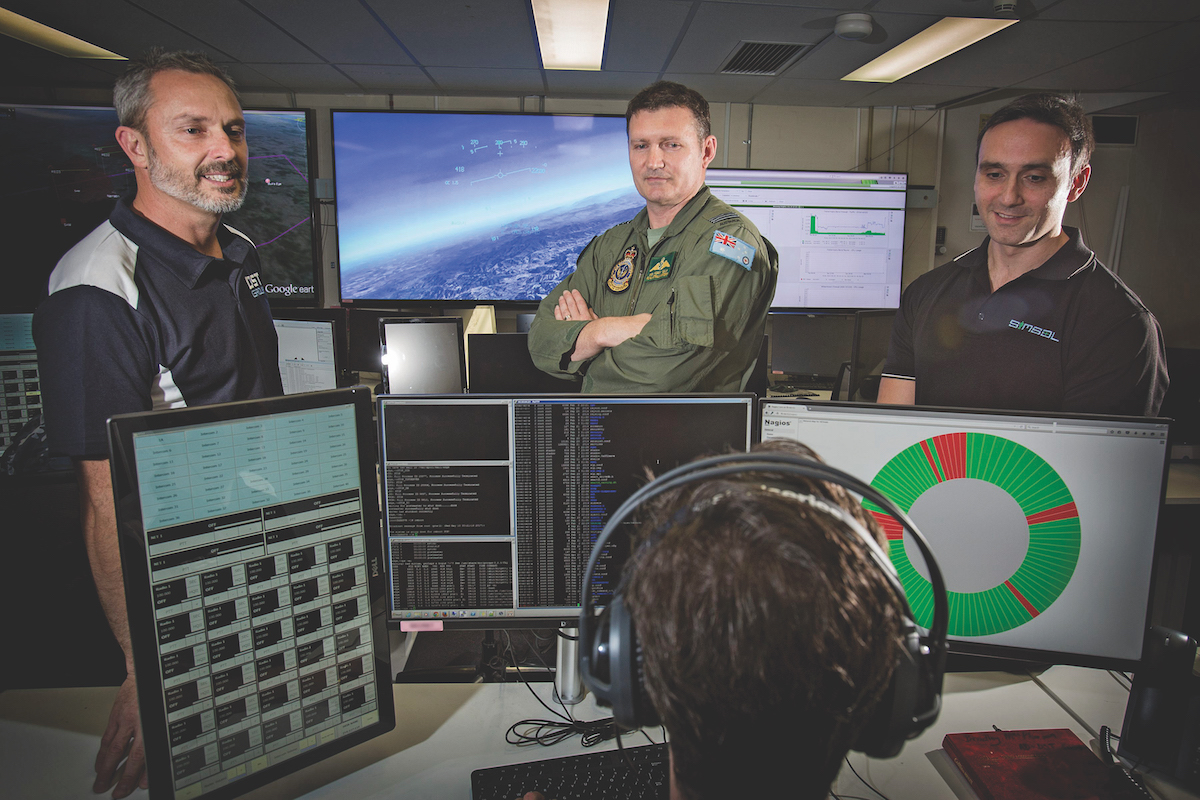
The Defence CRC is supported by the Next Generation Technologies Fund, a government initiative running through to June 2026 with a A$730 million investment in R&D for defence technologies. Initiatives like these are going some way to putting Australia on the global map of science and technology. But Alex is aware that the work can’t end here.
“The role of science and technology is not always well understood by the Australian public and by stakeholders. People wonder what science and technology can do for them, and they get it at an abstract level, but not entirely at a practical one.” The journey from experiment to practical application is larger and more complex than people might think, and there is some confusion surrounding the process.
“We are collaborating and innovating more to bring more value to the fight. Every scientist in our organisation is an ambassador, and every one of them needs to be talking passionately about their science.”
Moving on
Alex is leaving DST in a strong position, having ensured over almost seven years at the helm that the organisation continually recommits to delivering valuable outcomes to the Australian Defence Force. “I’ve had a fantastic time in Defence; it’s been a real honour and a privilege to work here.” He anticipates the next question.
“Why leave? The key for any leader is not to overstay their time in an organisation. Once you reach double digits in years served, you may start to be less effective in creating value for your organisation, and risk becoming part of the problem rather than the solution. It’s always important for leaders to get in there and make a difference. Sometimes that means making significant changes.”
Alex is looking forward to the next challenge as Vice Chancellor of the University of Newcastle. He finds two things, in particular, attractive about UoN. “It is committed to excellence in research and teaching; at the same time, it’s strongly committed to equity. Universities can transform lives and regions, and I’m excited to be part of an institution that’s committed to doing so.”
He knows that he is leaving at the right time, and reiterates that “the role of a leader is to leave an organisation in better shape than it was when they joined”. He has performed this role perfectly.

